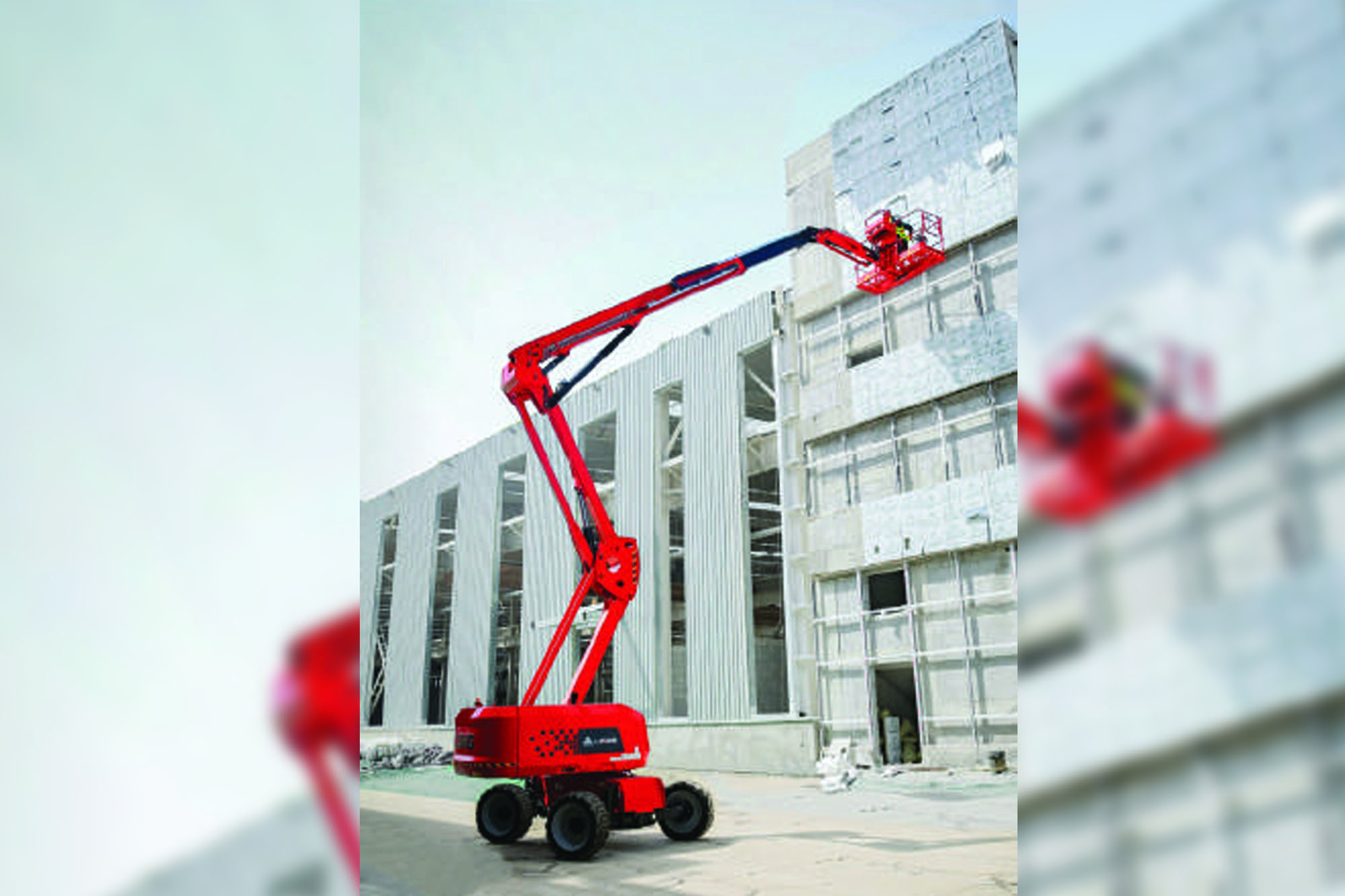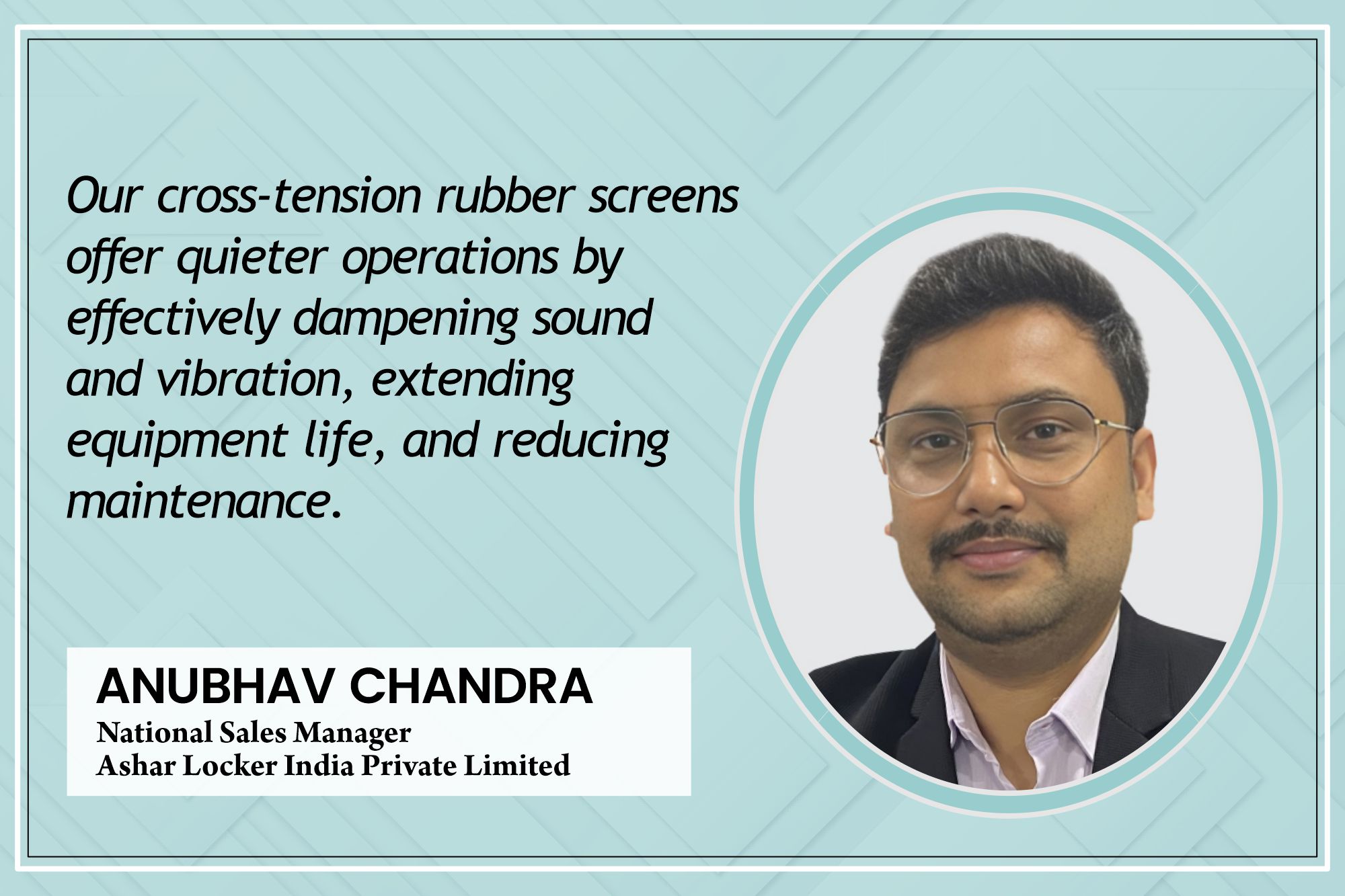Ensuring safety in every ascent
By Edit Team | May 10, 2024 6:10 pm SHARE

Discover how Aerial Work Platforms (AWPs) prioritise safety at every step, empowering the workforce to ascend confidently.
What are the different types of Aerial Work Platforms (AWPs) that your company deals with?
We specialise in diverse Aerial Work Platforms tailored to meet various needs. Among our offerings, we feature Truck Mounted Boom Lifts, available in telescopic and articulated configurations, providing versatility and reach for elevated tasks. Our lineup includes self-propelled options in telescopic and articulated designs, enabling efficient manoeuvrability and access to challenging work areas. Furthermore, our inventory comprises Scissor Lifts, with diesel and battery operation options, ensuring flexibility and suitability for diverse job requirements. Our commitment lies in delivering reliable solutions that cater to the specific demands of our clients, empowering them to execute their projects safely and efficiently.
How do you look at the present market for AWP in terms of sales?
India’s current landscape of Aerial Work Platforms (AWPs) holds significant promise, owing to growing demand across sectors such as construction, infrastructure development, and maintenance services. This upsurge can be attributed to the ongoing trend of urbanisation, where the imperative for safe and efficient access to elevated spaces is paramount. As cities expand and vertical structures become more prevalent, the necessity for reliable AWPs is expected to drive sustained growth in the market.
In light of these factors, the trajectory of AWP sales is poised to maintain its upward momentum. The evolving urban environment necessitates solutions that ensure productivity and safety at heights. As such, AWPs serve as indispensable tools in meeting these requirements, positioning themselves as indispensable assets in various industries. With a keen eye on safety, efficiency, and adaptability, the market for AWPs in India stands as a beacon of opportunity amidst the nation’s dynamic development landscape.
Can you briefly overview AWP models’ general features and specifications?
Ensuring safety for personnel and materials when operating at elevated heights is a paramount concern. Each type of Aerial Work Platform (AWP) integrates specific features tailored to enhance safety. Railings, for instance, serve as integral barriers against falls, mandated to shield operators from accidental slips or missteps. Similarly, Emergency Stop Buttons are strategically positioned for swift access, enabling operators to promptly halt operations in response to unforeseen emergencies, fostering a culture of immediate action and risk mitigation.
Sensors and alarms play a pivotal role in monitoring platform angles, providing real-time feedback to operators on safe operating conditions. This crucial feature acts as a preemptive measure against potential tip-overs, underscoring AWP design’s proactive approach to safety. Additionally, Safe Load Indicators ensure the optimal combination of height and load, promoting operational efficiency without compromising safety. Furthermore, including stabilisers and outriggers expands the platform’s base of support, mitigating the risk of tipping, especially on uneven terrain, and reinforcing the commitment to a secure working environment. Through these meticulously engineered safety features, AWPs prioritise the well-being of operators and the integrity of the work environment, fostering a culture of safety excellence at elevated heights.
What are the innovative technologies, features, and advanced control systems incorporated into your AWP designs for enhanced performance or efficiency?
Special-quality performance steel is used in AWPs, which helps in the optimum design of elevated platforms, ensuring light weight and strength. Each machine comes with a minimum weight and innovative designs. Further, our principals are evolving eco-friendly and intelligent platforms. We use advanced hydraulics, superior SLIs, remote control, and other electronic sensors and controls.

What type of maintenance support do you offer?
We offer warranty to our end customers as defined by the Principals. When new machines are commissioned, Operator training is imparted at our works or site as a first step. During the warranty period, the customers buy recommended spares needed for normal machine operations. The service team visits the machine during the warranty period and carries out thorough inspections, check-ups, etc.
After the warranty period, we provide AMCs (Annual Maintenance Contracts), which stipulate periodic visits by the service team in a year, training operators about safety and best working practices and diagnosing the problems before any major breakdowns happen. The parts, if needed, are recommended. In addition, we carry out free check campaigns during lean seasons like monsoons, complete health checks of these machines, and alert customers in case of any violations of safety parameters.
We also help customers to find suitable operators for their machines if needed.
Due to our dedicated and skilled workforce and facilities, we also undertake complete refurbishing of truck-mounted AWPs of any make, ensuring integration of all hydraulic and electronic components. We also carry out complete repairs and paintings.
What trends do you foresee in the AWP industry in the coming years?
Several transformative trends are poised to shape the Aerial Work Platform (AWP) industry landscape in India. Technological advancements stand at the forefront, and more sophisticated AWP models are anticipated to feature enhanced efficiency and eco-friendliness. Moreover, there’s a concerted effort towards integrating advanced safety features and digital platforms for streamlined monitoring and management, reflecting a commitment to innovation and adaptability in meeting evolving industry demands.
Furthermore, a pronounced shift towards customisation and specialisation is expected, driven by the need for tailored AWPs catering to specific industries or applications. This could manifest in developing niche models like narrow-access platforms for urban environments or high-capacity variants tailored for heavy industries. Simultaneously, a heightened focus on safety and training is anticipated in response to the escalating emphasis on workplace safety. This could translate into increased investment in comprehensive safety training programs and certifications for AWP operators, underscoring a collective commitment towards fostering a culture of safety excellence in the industry. As India continues its urbanisation and infrastructural development trajectory, the demand for AWPs in construction, maintenance, and repair activities within urban areas is poised for significant growth. This evolving landscape also calls for a keen awareness of government regulations, where changes in safety standards, emissions, and import/export policies could exert notable influence, driving both innovation and compliance efforts within the AWP sector.
Have you noticed any recent challenges in the AWP industry?
In the Indian AWP industry, various challenges and opportunities shape the landscape, influencing strategic decisions and market dynamics. Infrastructure constraints, particularly in regions characterised by narrow roads or limited access points, pose significant hurdles to effectively deploying Aerial Work Platforms (AWPs). Likewise, amid a backdrop of cost sensitivity among buyers, manufacturers grapple with the delicate balance of maintaining competitive pricing while investing in innovation and ensuring product quality.
Furthermore, fostering safety awareness and compliance remains a pressing concern, especially within smaller businesses needing robust safety protocols. Moreover, the market’s fragmentation, with a mix of small, medium, and large players, fuels intense competition and pricing pressures. However, amidst these challenges lie ample opportunities. The rapid pace of urbanisation in India unveils a burgeoning demand for AWPs, particularly in construction, maintenance, and repair activities within urban settings. A ripe landscape for technological innovations also offers companies avenues to distinguish themselves by developing more efficient, versatile, and environmentally friendly AWPs. The growing preference for renting over purchasing presents a promising avenue for rental companies to expand their portfolios and cater to a broader customer base. Moreover, government initiatives aimed at infrastructure development, such as the Smart Cities Mission and various transportation projects, catalysed AWP demand across diverse sectors. Navigating these challenges while seizing the opportunities can empower companies to thrive in India’s dynamic and expanding AWP market.
Cookie Consent
We use cookies to personalize your experience. By continuing to visit this website you agree to our Terms & Conditions, Privacy Policy and Cookie Policy.




































































